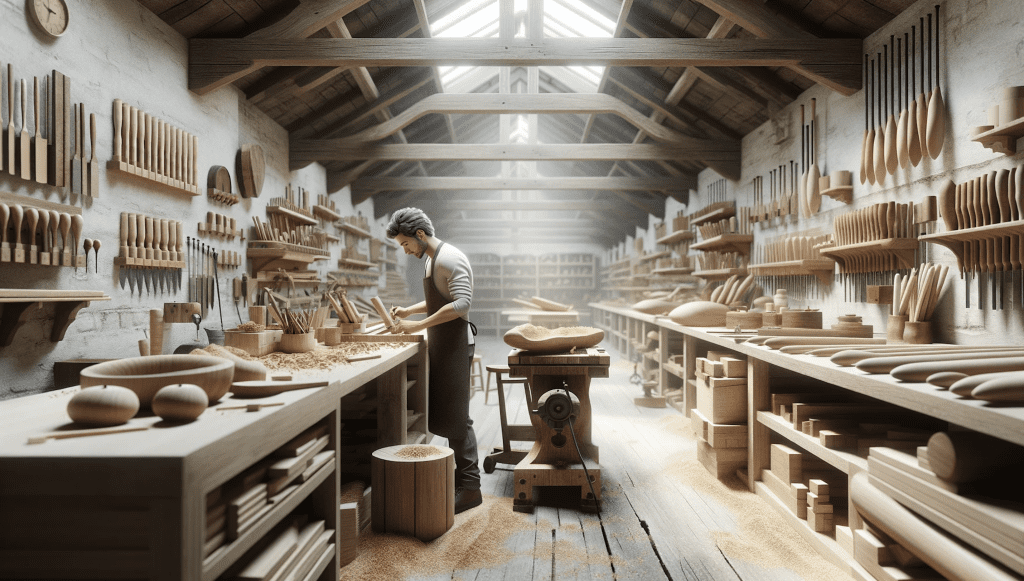Sourdough bread baking is a time-honoured tradition that combines science, artistry, and a touch of magic. At the heart of this craft lies the humble bread lame, a tool that plays a pivotal role in the creation of beautiful, artisanal loaves. In this detailed guide, we will delve deep into the world of bread lames, exploring their history, functionality, and the diverse range of designs and materials used in their construction. We will also extend an invitation to makers and creators to collaborate with The Sourdough People, offering them a platform to showcase their unique bread lames in our marketplace.
What Are Bread Lames
Bread lames, often referred to simply as lames, are specialized tools used in the art of bread baking. The term “lame” is derived from the French word for “blade,” which accurately describes the tool’s primary function. A bread lame typically consists of a handle and a removable blade, which is used to score or slash the surface of bread dough before it is placed in the oven. This scoring serves both practical and aesthetic purposes, allowing the bread to expand and release steam during baking, while also creating decorative patterns on the crust.
Why Are Bread Lames Needed for Scoring Sourdough Bread
In the realm of sourdough bread baking, scoring is a critical step that can make a significant difference in the final product. Sourdough bread, known for its complex flavors and chewy texture, requires careful handling to achieve the desired outcome. Scoring the dough before baking serves several purposes:
- It allows the bread to expand properly during baking, preventing it from bursting open or forming uneven shapes.
- It controls the direction in which the bread expands, ensuring a more uniform shape and appearance.
- It releases steam from the dough, which helps create a crispy, golden crust.
Why Score Sourdough Bread
Scoring sourdough bread is not only practical but also an art form in itself. Bakers use different scoring techniques to create stunning designs on the crust, adding to the visual appeal of the finished loaf. Some popular designs include the classic single slash, the intricate lattice pattern, and the decorative ear, which is achieved by scoring at an angle to create a flap of dough that rises during baking.
Popular Designs for Sourdough Scoring
Scoring sourdough bread is an art form that offers bakers a canvas to showcase their creativity. While some may opt for classic designs like a single slash or a cross, others venture into more intricate patterns to add flair to their loaves. Popular designs include spirals, which create an eye-catching effect on the crust, and diamonds, offering a touch of elegance and sophistication. Wheat stalks are another favoured choice, imparting a rustic charm reminiscent of golden fields. Bakers often tailor their scoring to suit the occasion or season, with some experimenting with different patterns to match a special meal or celebration. Whatever the design, scoring sourdough bread is a gratifying process that allows bakers to infuse each loaf with their unique style and artistry.
Best Woods Used for Bread Lames
Bread lames are crafted with handles made from a variety of high-quality woods, each chosen for its unique properties and aesthetic appeal. Common woods used for bread lame handles include maple, walnut, cherry, olive, beech, and ash. These woods are prized for their durability, beauty, and ability to provide a comfortable grip for the baker.
- Maple: Revered for its durability and versatility, maple wood is a popular choice for bread lame handles. Its tight grain structure provides excellent strength, ensuring longevity even with frequent use. Maple’s light color and smooth texture also contribute to its aesthetic appeal, making it an attractive option for bakers seeking both functionality and beauty in their tools.
- Walnut: Renowned for its rich, dark hues and striking grain patterns, walnut wood adds an elegant touch to bread lame handles. Beyond its visual appeal, walnut offers exceptional strength and stability, making it a reliable choice for bakers who prioritize both style and performance. Its smooth texture and comfortable grip further enhance the overall baking experience, allowing for precise scoring with ease.
- Cherry: Cherished for its warm tones and lustrous finish, cherry wood lends a touch of sophistication to bread lame handles. Known for its moderate hardness and excellent workability, cherry wood is prized by craftsmen for its ease of shaping and finishing. Bakers appreciate cherry’s natural resistance to moisture and wear, ensuring that their bread lames remain resilient and beautiful over time.
- Olive Wood: Revered for its distinct grain patterns and rich, golden hues, olive wood is a unique and luxurious choice for bread lame handles. With its inherent strength and durability, olive wood provides a solid grip and excellent control during scoring. Additionally, olive wood’s natural oils contribute to its resistance to moisture and bacterial growth, making it an ideal choice for hygienic and long-lasting bread lames.
- Beech: Known for its light color and fine grain, beech wood is valued for its smooth texture and durability. Beech handles offer a comfortable grip and are resistant to warping, making them a practical choice for bread lames that require precision and control.
- Ash: With its distinctive grain patterns and light color, ash wood is both visually appealing and durable. Ash handles provide a sturdy grip and are resistant to wear, ensuring that bread lames made from this wood remain reliable and attractive over time.
Each type of wood offers its own set of advantages, catering to the diverse preferences and requirements of bakers. Whether prioritizing durability, aesthetics, or functionality, bread lame handles crafted from maple, walnut, cherry, olive wood, beech, or ash elevate the baking experience, adding a touch of craftsmanship and beauty to every loaf of sourdough bread.
Types and Styles of Bread Lames
Bread lames offer a diverse array of types and styles, each tailored to provide unique advantages for sourdough bread scoring.
Here’s a glimpse into some of the most common variations:
- Straight Blade Lames: These lames excel at creating long, precise cuts in the dough, offering adaptability for a multitude of scoring patterns.
- Curved Blade Lames: Crafted for crafting curved incisions in the dough, these lames enable the creation of intricate designs like spirals or waves.
- Scoring Wheels: Featuring a rolling wheel or blade, these tools ensure consistent depth and pattern on the dough’s surface.
- Multi-Blade Lames: Equipped with two or more adjustable blades, these lames facilitate the creation of detailed patterns or scoring multiple loaves simultaneously.
- Decorative Lames: Melding functionality with aesthetics, these lames boast elaborate handles or blades for crafting unique crust patterns.
- Lame with Safety Cap: Designed with a safety cap for blade protection during storage, ensuring safe handling.
- Adjustable Lames: Offering customization for cut width and depth, these lames provide enhanced flexibility in scoring techniques.
- Wooden Lames: Rooted in tradition, these lames provide a comfortable grip and are often crafted from premium woods like maple, walnut, or cherry.
- Plastic Lames: Lightweight and easy to maintain, these lames are a practical choice for many bakers.
- Metal Lames: Known for their durability, these lames are long-lasting, although they can be heavier compared to other options.
A Call to Action for Makers and Creators
If you are a maker or creator of bread lames, we invite you to collaborate with The Sourdough People and showcase your products in our marketplace. We are committed to offering only the best sourdough bread products and tools to our customers and look forward to meeting you and learning about your bread lames.
Contact us today to discuss how we can work together to bring your products to our community.





















